CarEdge saved me over 4,500 dollars on a brand new Honda Pilot. I can't say thank you enough.
Price intelligence
Find a wide range of vehicle listings with market insights on new and used listings near you.


Help us personalize your CarEdge experience — it only takes a second.
Your answers help us personalize your CarEdge journey — we’ll follow up with tips and next steps that match your buying timeline.

What goes up, must come down, even in the stubborn auto market. We’ve been tracking new car inventory for months as dealer lots have steadily filled up, at least for some brands. The inevitable is finally happening: new car incentives are returning, and they’re back in a big way. Whether you’re looking to buy or lease, here’s where the best cash and financing incentives are today.
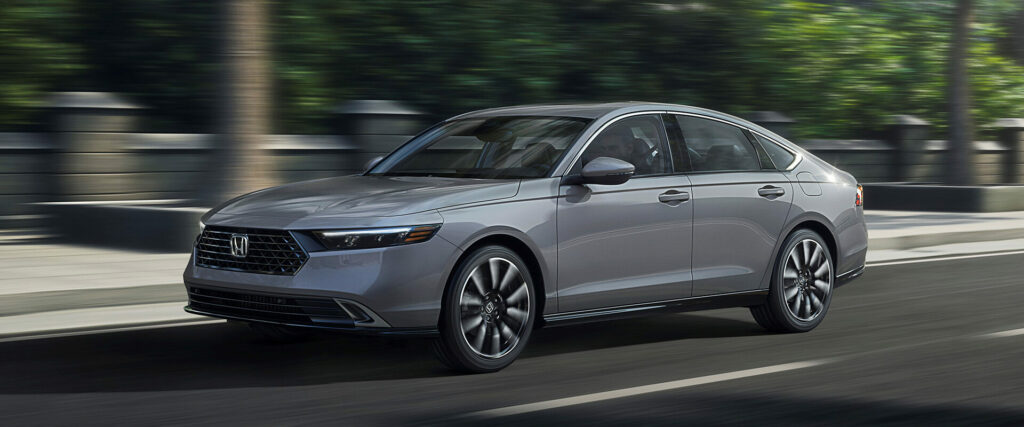
Want to finance your car with an irresistibly low interest rate? It’s not easy to do considering that the average APR for new car loans has climbed to 7.2%. These brands are offering appetizing APRs in August:
Hyundai, Ford, and Nissan: APR as low as 0.0% for most models. This is where you’ll find the best auto loan deals in August!
Chevrolet: As low as 1.9% APR for their sparkling 2023 models.
Honda: Save money on interest with APR as low as 0.9% for most models, including the Accord, Odyssey, Passport, Pilot, and others.
Subaru: APR as low as 1.9% for 2023 models, including the Outback, Crosstrek, Ascent and more.
Volkswagen: APR as low as 1.9% for the Taos and Tiguan crossovers.
Here’s every automaker’s best financing offers this month.
How to Finance a Car Like a Pro: The Ultimate Auto Financing Cheat Sheet
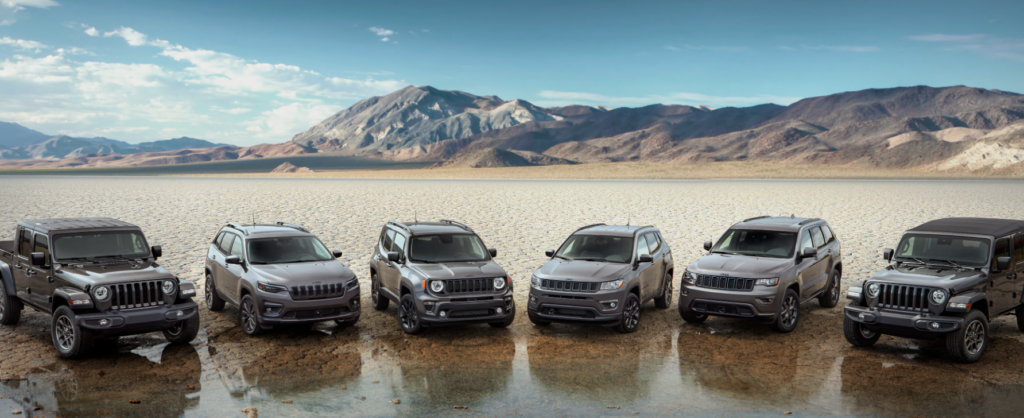
When new car inventory climbs, cash incentives come roaring back. For models with high inventory right now, manufacturer incentives are piling up. And when it comes to cash incentives, the deals are lavish:
Ford Mustang Mach-E: $3,000 off MSRP (but be wary of the dealers who continue to mark up their EVs).
Hyundai IONIQ 5 & IONIQ 6: Save a whopping $5,000, with existing Hyundai patrons getting a sweetened deal of up to $7,500 off.
Jeep: Adventure more with $4,750 off the Wrangler and $4,000 off the Grand Cherokee. Jeep inventory is through the roof, and prices WILL come down further.
Nissan Ariya & Kia EV6: Electrify your drive with up to $3,750 off. It’s notable that neither comes with the revised EV tax credit.
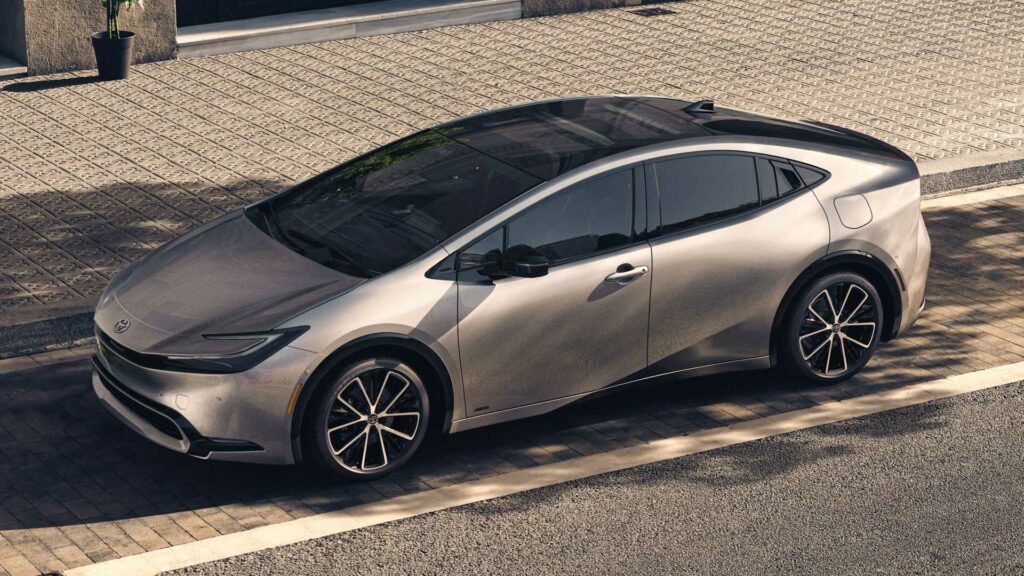
Toyota: Enjoy a lavish $7,500 cash incentive with the all-electric bZ4X, with the RAV4 Prime and Prius Prime following closely behind at up to $6,500 cash back. However, Toyota’s Prime models are still in short supply, so expect to shop around.
We pored over every automaker’s advertised lease deals for August to find the best of the best. In general, lease offers are much better this month than in the recent past. We’ve broken down lease deals by vehicle type:

Hyundai Venue: At just $151/month, the Venue promises affordability with style.
Honda Civic Sedan: This legendary sedan is available at $259/month.
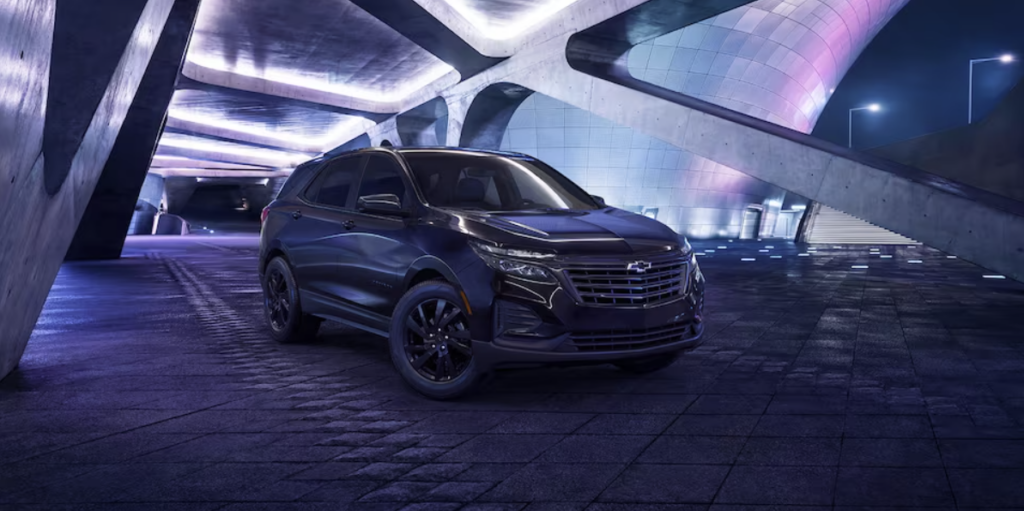
Chevrolet Equinox & GMC Acadia: At $269 and $289/month respectively, these SUVs offer an optimal blend of luxury and power.
Honda CR-V: Embark on your next journey at a breezy $309/month.
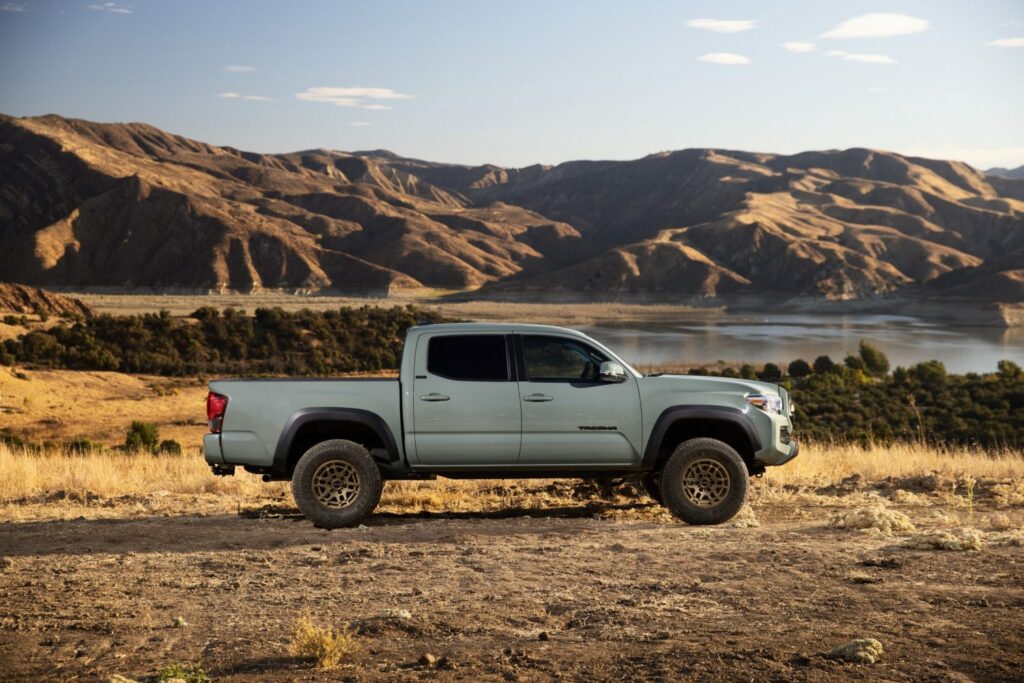
Silverado 1500 Crew Cab LT: A robust truck deal at $399/month.
Toyota Tacoma: This iconic truck can be yours at just $362/month.

Chevrolet Bolt EV: $299/month for 36 months with $5,869 due
Mustang Mach-E GT: $398/month for 36 months for 39 months with $6,578 due
Hyundai IONIQ 6: $7,500 EV lease bonus (SE and SEL); $349 per month with $4,999 due
Hyundai IONIQ 5: $7,500 EV lease bonus (SE and SEL); $399 per month with $4,999 due
Tesla Model 3 RWD: $399 per month for 36 months with $5,594 due
Tesla Model Y: $569 per month for 36 months with $5,804 due
See every automaker’s lease deals in August
The new car market is undergoing an upheaval, and incentives are likely to get better in the weeks ahead. The combination of 7%+ interest rates, MSRP hikes and a softening used car market all point toward less demand for new cars. This is especially true for overpriced trucks and SUVS.
As you head out to shop the dealer lots, remember this: the savings don’t have to end with manufacturer incentives. CarEdge Coaches are seeing increased negotiability, and are helping buyers save thousands of dollars every day.
Take this FREE resource with you: The Ultimate Car Buying Cheat Sheet
Ready to work 1:1 with a car buying pro? Learn more about CarEdge Coach, your path to the most savings and the least stress. Prefer a DIY path to car buying? With CarEdge Data, you have the tools at your disposal to find the best deals and identify opportunities for negotiation.
And of course, we have hundreds of 100% free car buying guides just a click away. Don’t forget to connect with the CarEdge family over on our Community Forum.
We have car buying help to suit everyone’s needs. See how much you could save today!

The numbers are in, and let’s just address this from the get-go: Tesla continues to dominate electric vehicle sales in America. We’ve got the latest data, and there’s a lot to digest. Check back for updates when Q3 2023 numbers are available.

Here’s the latest EV sales totals via Auto News. These are the 2023 totals through the second quarter.
| Make | Model | Total Sales (2023) |
|---|---|---|
| Tesla | Model Y | 190,500 |
| Tesla | Model 3 | 121,500 |
| Chevrolet | Bolt (EV and EUV) | 33,659 |
| Tesla | Model S | 19,100 |
| Volkswagen | ID.4 | 16,448 |
| Ford | Mustang Mach-E | 14,040 |
| Hyundai | IONIQ 5 | 13,641 |
| Tesla | Model X | 11,900 |
| Genesis | GV60 | 11,320 |
| BMW | i4 | 10,724 |
| Ford | F-150 Lightning | 8,700 |
| Kia | EV6 | 8,328 |
| Rivian | R1T | 7,811 |
| BMW | iX | 6,486 |
| Rivian | R1S | 6,336 |
| Polestar | Polestar 2 | 5,783 |
| Mercedes-Benz | EQS SUV | 5,490 |
| Nissan | Ariya | 5,195 |
| Audi | Q4 e-tron | 4,682 |
| Mercedes-Benz | EQS Sedan | 4,539 |
| Volvo | C40 | 4,533 |
| Nissan | Leaf | 4,234 |
| Toyota | bZ4X | 3,659 |
| Mercedes-Benz | EQB SUV | 3,404 |
| Hyundai | IONIQ 6 | 3,245 |
| Porsche | Taycan | 3,162 |
| Mercedes-Benz | EQE Sedan | 2,990 |
| Mercedes-Benz | EQE SUV | 2,845 |
| Audi | e-tron | 2,513 |
| Audi | e-tron GT | 1,786 |
| Lucid | Air | 1,390 |
| Audi | Q8 e-tron | 1,119 |
Tesla continues to lead with 68% market share among US EV sales. In other words, all other EV sales combined still can’t compare to Tesla’s domination.
The next best-selling EVs in America behind Tesla are the Chevy Bolt, the newly American-made Volkswagen ID.4, the Ford Mustang Mach-E, and the Hyundai IONIQ 5.
The Chevrolet Bolt EV has had a record sales year. Bolt EV and EUV sales were up 100% year-over-year in the second quarter. It looks like the Bolt is having success right as GM decided to cancel it. Perhaps that’s a major reason why they recently mentioned a resurrected Bolt in the future, powered by the superior Ultium batteries.
The Ford F-150 Lightning is by far the best-selling electric truck in America, with Rivian quite a ways behind. We don’t expect the Lightning to have serious competition until the Silverado EV comes along. Full production is unlikely before next spring.
Stay tuned for the next update as Q3 2023 numbers come out. Will Tesla continue to dominate, or will legacy automakers FINALLY catch up? What do you think? Leave us a comment below. We’d love to hear from you.
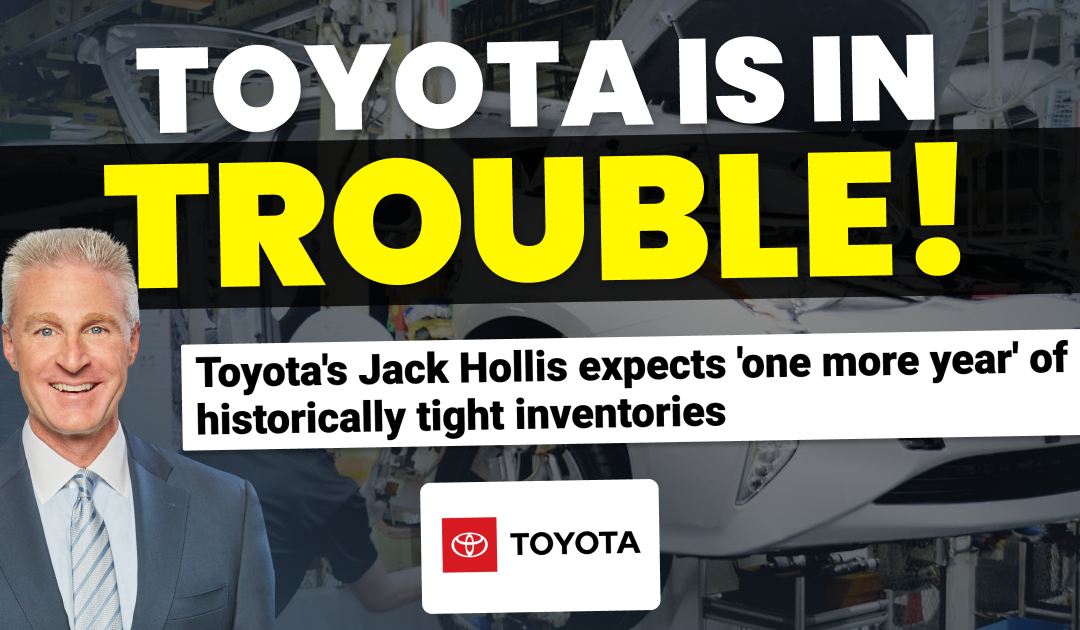
Right now, there’s a 41-day supply of new Toyota vehicles in the U.S. What this means is, at the current sales pace, all 261,604 new Toyotas would find their new homes in just over a month without new inventory. But how does this scenario compare to other auto manufacturers? And more importantly, which Toyotas give you the most room for negotiation, and which ones are holding their ground? Let’s dive into the details.
| Make | Inventory % Increase (3 Months) | Market Day Supply - December 2023 | Market Day Supply - September 2023 |
|---|---|---|---|
| Honda | +68% | 47 | 28 |
| Kia | +89% | 53 | 28 |
| Toyota | +37% | 41 | 30 |
| Hyundai | +50% | 75 | 50 |
| Chevrolet | +63% | 88 | 54 |
| Nissan | +58% | 112 | 71 |
| Volkswagen | +52% | 96 | 63 |
| Ford | +43% | 127 | 89 |
| Jeep | +31% | 191 | 146 |
Market Day Supply (MDS) is a leading industry metric that is used to assess inventory. Market day supply takes the average daily sellin rate and existing inventory into account to determine how long it would take to sell every vehicle in inventory at recent average selling rates. A healthy ‘normal’ MDS is anywhere between 45 and 65 days of supply.
As you can see, Toyota has the lowest new car inventory among mainstream brands in America with just 41 days of supply. Honda, long perceived as Toyota’s most direct competitor, is #2, but is faring better at 47 days of supply. Kia comes in third with 53 days of inventory.
Contrarily, Nissan, whose market share has been dwindling in the U.S., unsurprisingly has an oversupply of new car inventory at the moment with a MDS of 112 days. Nissan was hit hard by the chip shortage, but the brand doesn’t seem to be winning back many of the customers it lost. Nissan’s US market share is now at just 4.9%.
And then we have the American automakers. Chevrolet is above average with a 88-day supply, but Ford and Jeep are drastically exceeding healthy inventory levels. Jeep is in the lead, with 191 days of supply. Although this isn’t the best news for these automakers, it certainly opens up opportunities for car buyers looking to drive a hard bargain.

If your goal is to save thousands of dollars on your new Toyota, then it’s time to talk about negotiability at a finer scale. For that, we need to look at today’s inventory numbers across the Toyota model lineup.
Using the tools available through CarEdge Data, we analyzed Toyota inventory for every model on sale in America. These numbers reflect nationwide supply. You can check out local Toyota inventory using CarEdge Data.
| Make | Model | Market Day Supply (October) | Market Day Supply (September) |
|---|---|---|---|
| Toyota | Venza | 46 | 39 |
| Toyota | 4Runner | 61 | 45 |
| Toyota | Tundra | 63 | 34 |
| Toyota | Crown | 88 | 57 |
| Toyota | bZ4X | 110 | 94 |
Remember, a healthy auto market is characterized by about 60 day’s supply of new vehicles. The further inventory gets away from that, the more ‘out-of-whack’ the car market becomes. These models have the most inventory today of all Toyota models.
The redesigned Prius was on this list last month with a 73-day supply, but now the Prius seems to be selling quickly.
The Grand Highlander has been selling a lot quicker, and is going to be a lot tougher to negotiate now. Toyota’s new darling, the resurrected Crown, is selling slowly. Perhaps car buyers don’t have the appetite for $50,000 sedans that Toyota had expected.
The bZ4X electric SUV tops the list, with 110 day’s supply. With no federal tax credit and similarly priced, better equipped competitors, we’re not surprised.
Don’t negotiate without this FREE cheat sheet!
| Make | Model | Market Day Supply (October) | Market Day Supply (September) |
|---|---|---|---|
| Toyota | Camry | 39 | 30 |
| Toyota | Grand Highlander | 20 | 20 |
| Toyota | Highlander | 36 | 32 |
| Toyota | Sienna | 30 | 25 |
| Toyota | Corolla Cross | 28 | 27 |
| Toyota | RAV4 | 32 | 28 |
| Toyota | Sequoia | 44 | 23 |
| Toyota | Tacoma | 42 | 32 |
| Toyota | Corolla | 41 | 18 |
The Camry is the best-selling sedan in America, and Toyota can’t seem to produce enough of them. There’s a 39-day supply of them, and in some local markets, the situation is even worse. Despite slim supply, our Car Coaches say you should NOT pay dealer markups for the Camry, or any model for that matter. The Highlander is not much better, with a three-week supply nationwide.
Our CarEdge Coaches joke that the RAV4 Prime is their nemesis. It’s very tough to negotiate, all because of extremely limited inventory. Across all powertrains, the RAV4 has just a one-month supply right now.
See Toyota listings near you – all with the power of local market data.

Despite the slim pickings with some Toyota models, it’s still possible to negotiate some great deals. Even for models in highest demand, there’s no reason you should have to pay for dealer markups, forced add-ons, or overpriced warranties.
Ready to negotiate like a pro? Try CarEdge Coach and CarEdge Data today! With these tools at your disposal, you can take control of your car buying experience, understand market dynamics, strategize effectively, and secure the best deal possible. We’re simply here to help!
We’re constantly told that electric vehicles are the future. But a closer look at recent sales data suggests that, for some models at least, the future isn’t quite here yet. Let’s switch gears and delve into fresh data to understand what all the fuss is about.
The market for electric cars, trucks and SUVs is growing, no doubt about it. Our updated analysis of EV market share has EV sales above 7 percent for the first time. However, as with any burgeoning market, there are growing pains. Some new electric models are spending months on dealer lots, while others seem to be driving off as soon as they arrive.
So, what’s causing these unexpected hold-ups in EV sales? To answer that, we need to take a closer look at a metric of market health that is too often overlooked by car buyers: days supply. “Days supply” is a term used in the automotive industry to represent the number of days it would take to sell all of a particular car model in inventory, given the current sales rate.
In 2023, the days supply of non-Tesla EV models keeps getting weirder and weirder. Why don’t we have Tesla data to share? Well, no one has that except Tesla, since they sell direct-to-consumer, along with Rivian, Polestar, Lucid and a few other low-volume automakers. Analysts have to wait until sales numbers are released for any real insight. We DO, however, have some interesting USED Tesla numbers to dig into. More on that in a bit.
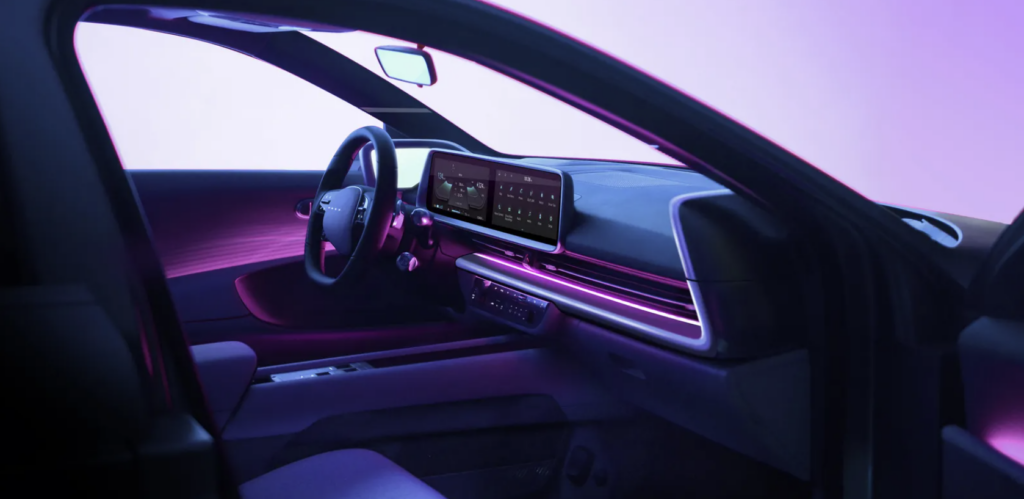
The latest from CarEdge Data reveals some surprising numbers. New EV inventory is above and beyond anything we’ve ever seen before.
The Mustang Mach-E, despite being highly anticipated and once labeled a ‘Tesla-killer’, now has a supply of 153 days. Meanwhile, other popular EVs like the Hyundai IONIQ 5 and 6, are taking 110 and 159 days, respectively, to sell. The IONIQ 5 was last year’s Car and Driver EV of the Year, only to pass that same title on to the IONIQ 6 in 2023. You’d think they’d be selling like crazy, right?
And that’s not all. Nissan’s Ariya is sitting for a whopping 219 days before finding a new home, and the Subaru Solterra isn’t far behind with 199 days.
Here’s current dealer inventory for every new electric vehicle in America, except Tesla and the other direct-to-consumer automakers.
| Make | Model | New/Used | Days Supply (7/28/23) |
|---|---|---|---|
| Ford | Mustang Mach-E | new | 210 |
| Chevrolet | Bolt EV | new | 44 |
| Chevrolet | Bolt EUV | new | 33 |
| Hyundai | IONIQ 5 | new | 116 |
| Hyundai | IONIQ 6 | new | 159 |
| Genesis | GV60 | new | 200 |
| Kia | EV6 | new | 146 |
| Volkswagen | ID.4 | new | 150 |
| Audi | Q4 e-tron | new | 153 |
| Porsche | Taycan | new | 152 |
| Mercedes | EQS | new | 194 |
| Mercedes | EQB | new | 101 |
| BMW | i4 | new | 61 |
| BMW | i7 | New | 174 |
| Volvo | C40 | new | 132 |
| Subaru | Solterra | new | 199 |
| Nissan | Ariya | new | 176 |
| Nissan | Leaf | new | 140 |
| Toyota | bZ4X | new | 190 |
| Ford | F-150 Lightning | new | 103 |
| GMC | Hummer EV | new | 90 |
Remember when GM executive Bob Lutz couldn’t stop hating on Tesla? For years, he went on and on about how the then-EV startup was doomed to fail. Making cars was just too hard and unprofitable, he said.
Three short years later, and boy was he wrong. Tesla is STILL the king of EV sales, and to rub salt on the wound, Tesla is now convincing one legacy automaker after another to adopt their once proprietary charging standard, GM included. What does all of this have to do with EV inventory numbers in 2023? Let me explain.
Tesla’s bold pricing strategy is driving a shift in the EV market. They initiated massive price cuts this year, predominantly affecting their widely circulated Model 3 and Model Y, and creating a ripple effect in the sector.
These strategic reductions, alongside stabilizing gas prices, rising interest rates, and thrifty consumers, resulted in less demand. When demand dropped, Tesla lowered prices.
Tesla’s price reductions triggered a downward trend in the new EV market. The Model Y began 2023 at $65,990 in the U.S., but price cuts and a cheaper base variant slashed the base price of the Model Y to $47,240 by early May. With access to the Supercharger network, over-the-air updates and longer range, many drivers looking to go electric simply went for the Tesla, leaving the competitors to pile up on dealer lots.
By the way, used Tesla models are still in demand. Days supply remains just slightly above average, and far below new EV inventory. Here’s a look at used Tesla inventory nationwide in July 2023:
| Make | Model | New/Used | Days Supply | Total For Sale | Total Sold (45 Days) |
|---|---|---|---|---|---|
| Tesla | Model Y | used | 65 | 1889 | 1304 |
| Tesla | Model 3 | used | 56 | 4564 | 3664 |
| Tesla | Model S | used | 91 | 2470 | 1218 |
| Tesla | Model X | used | 73 | 1382 | 850 |
Let’s take a closer look at the demand issue. Despite the buzz, not all EVs are finding eager buyers right off the bat. Let’s plug into a few potential reasons: price, charging infrastructure, vehicle range, and brand reputation.
First, despite the falling prices and high inventory, electric cars are expensive. The average EV price remains about 15% higher than that of the average conventional car. Those who really put on the miles can recoup that money through fuel and maintenance savings, but what about urban dwellers who may drive just 5,000 miles a year?
This higher upfront cost might deter many potential buyers, especially those with a limited budget or those who drive less frequently.
Secondly, the charging infrastructure for EVs is still developing and leaves much to be desired. This is especially true in rural America. Those who live in apartments, condos, or similar situations may not have any way to charge at home to begin with. And then there are variables like cold weather, towing, and high-speed driving that all impact an electric vehicle’s range, and undermine consumer confidence in EVs.
Lastly, there’s a cultural shift required to adapt to the EV lifestyle. Transitioning from gas stations to charging points, understanding charging times, and adjusting to the inability to simply work on your car in the garage are just some of the challenges for the everyday driver. In addition, for those who love the roar of an internal combustion engine or frequent long, remote road trips, an EV might not be ideal.
These are the BEST EVs for families today (price, range and more)
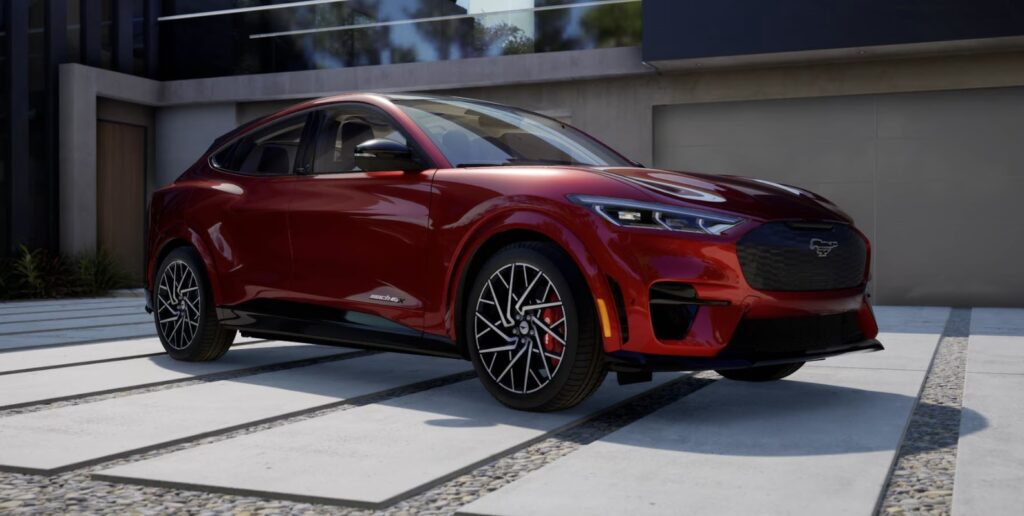
So what does this mean for you, the potential EV buyer? If you’re considering one of these slow-sellers, you might be able to secure a great deal. Some (but not all) dealers could be more than ready to sell their electric inventory, which could increase your negotiating power.
In fact, even before the most recent spike in electric vehicle inventory, we shared a few of the many examples of CarEdge community members negotiating thousands off of EV sticker prices. Yup, EVs are indeed negotiable!
Take this negotiation cheat sheet with you to the dealership!
What does it all mean for manufacturers? These trends could be a wake-up call. Legacy automakers and newcomers alike may need to adjust their strategies, rethink pricing, improve vehicle specs, or invest more in marketing and public education to attract buyers who may be on the fence about going electric.
Perhaps it’s too early to claim that these EVs are ‘struggling’. After all, every new technology takes time to become mainstream. And as more people embrace the benefits of electric driving, demand for these slow-selling models might well pick up speed.
But for now, savvy buyers could use this opportunity to drive a hard bargain on a brand-new EV.

The current landscape of the car market is an intricate maze of fluctuating inventory levels and shifting price tags. Your guiding light through this labyrinth? Knowledge, of course. The knowledge that shines the brightest is the understanding of Market Day Supply (MDS). This illuminates the number of days it would take to sell all the inventory of a particular model, assuming no new cars enter the market and the current sales rate holds steady. A high MDS suggests a surplus that may give you, the buyer, some bargaining leverage. In contrast, a low MDS may indicate the sellers have the upper hand.
By exploring CarEdge Data, we’ve highlighted which new cars in 2023 have the best and worst reliability ratings, and what the inventory data tells us about them. We think you’ll agree that these insights are rather fascinating, and provide you with the knowledge to navigate the market like a pro.

Using CarEdge Data, we analyzed nationwide supply and sales data for the ten most reliable cars in America, according to Consumer Reports. Here’s the data, and what it means for buyers.
| CR Reliability Ranking | Make | Model | Starting Price | Market Day Supply | Total For Sale | Total Sold (45 Days) |
|---|---|---|---|---|---|---|
| 1 | Toyota | Corolla Hybrid* | $24,145 | 24 | 11887 | 22588 |
| 2 | Lexus | GX | $59,775 | 56 | 3358 | 2679 |
| 3 | MINI | Hardtop 2 Door and 4 Door | $26,795 | 95 | 2809 | 1329 |
| 4 | Toyota | Prius | $28,445 | 23 | 1314 | 2574 |
| 5 | Mazda | MX-5 Miata | $29,215 | 85 | 1184 | 631 |
| 6 | Lincoln | Corsair | $40,085 | 96 | 3315 | 1550 |
| 7 | Toyota | Corolla* | $22,795 | 24 | 11887 | 22588 |
| 8 | Subaru | Crosstrek | $26,290 | 18 | 238 | 598 |
| 9 | BMW | 3 Series | $44,795 | 67 | 2642 | 1778 |
| 10 | Toyota | Prius Prime | $33,345 | 43 | 630 | 664 |
Firstly, the reliability leaderboard has a strong Toyota presence. Models like the Toyota Corolla Hybrid, Toyota Prius, and Toyota Corolla claim high reliability ratings from Consumer Reports. These models fly off the dealer lots relatively quickly with a Market Day Supply of just 23-24 days, showing the high demand for reliable Toyota cars. Data was unavailable for the Corolla Hybrid, so we have included the latest numbers for the overall Corolla model. These popular, reliable cars will be less negotiable due to higher demand and quicker sell times.
CarEdge’s Ray Shefska made it clear that despite great reliability and high demand, the days of being forced into paying a dealer markup are long gone. “No matter what the dealer tells you, never pay a markup or so-called ‘market adjustment’ for a new Toyota. The car market is very different in 2023 compared to the madness we saw during the chip shortage.”
Next, the MINI Hardtop (2 Door and 4 Door) and Lincoln Corsair, despite their high reliability, have a much longer MDS (95 and 96, respectively), suggesting these reliable models may not be as in-demand. You’ll have more leverage negotiating these prices, especially with industry knowledge and familiarity with how to work a deal.
The Subaru Crosstrek, another model with a high reliability rating, stands out with the lowest MDS among the top 10 reliable cars, indicating the supply can barely keep up with demand. CarEdge Car Coach Justise says that Subaru has been the low-inventory king for many years, and that’s not changing any time soon.
Looking at the price tags, the most reliable vehicles come with a broad range of starting prices, from $22,795 (Toyota Corolla) to $59,775 (Lexus GX). This proves that reliability isn’t necessarily associated with a steep price.

Car buyers aren’t racing to dealer lots for the models known for poor reliability. Unfortunately, American brands dominate the bottom ten.
| Make | Model | Starting Price | Market Day Supply | Total For Sale | Total Sold (45 Days) |
|---|---|---|---|---|---|
| Jeep | Wrangler | $36,990 | 98 | 26726 | 12330 |
| Mercedez-Benz | GLE | $58,850 | 69 | 5700 | 3733 |
| Jeep | Gladiator | $40,785 | 289 | 20945 | 3260 |
| Chevrolet | Silverado 1500 | $36,300 | 93 | 68320 | 33219 |
| GMC | Sierra 1500 | $37,100 | 121 | 30856 | 11477 |
| Chevrolet | Bolt | $27,495 | 35 | 3026 | 3908 |
| Ford | Explorer | $38,355 | 93 | 28323 | 13688 |
| Nissan | Sentra | $21,145 | 60 | 13381 | 10048 |
| Lincoln | Aviator | $54,735 | 178 | 4360 | 1103 |
| Hyundai | Kona Electric | $34,885 | n/a | n/a | n/a |
The Chevrolet Silverado 1500, despite its less than stellar reliability, has a significant volume on sale but a relatively high MDS. The takeaway? It’s plentiful but not necessarily popular.
Two other models, the Jeep Gladiator and Lincoln Aviator, despite their lower reliability, have very high MDS (289 and 178, respectively). It appears these models may be the wallflowers of the dealership lots.
Meanwhile, the Nissan Sentra holds its own despite lower reliability, with a fairly low MDS (60). Its budget-friendly starting price may be a contributing factor.
Interestingly, the Hyundai Kona Electric does not have available market or sales data, shedding little light on its demand or supply status.
As we can see, both highly reliable and less reliable cars come with a wide range of starting prices. This indicates that the cost is not necessarily a reliable indicator of its reliability.
Now, armed with these insights, you can navigate the market better. Whether you’re looking for a reliable titan like the Toyota Corolla, or even considering a less reliable model like the Chevrolet Silverado 1500, understanding the role of market days’ supply can give you the edge in your car-buying journey. Where there’s more inventory, greater negotiability is sure to follow.
Don’t forget to check out CarEdge Car Search, where auto industry insiders see behind-the-scenes data with every new and used car listing!
But we won’t leave you just yet. We want to arm you with more resources to make your journey smoother. One such tool is our free Car Buying Cheat Sheet. This popular resource can enhance your understanding of the market and help you zero in on the perfect car at the perfect price.
For a more detailed understanding, download your first CarEdge Report today. This report offers a comprehensive breakdown of key numbers in a simple and digestible format, setting you up for success at the negotiation table.
And if you’re looking for a personalized touch, CarEdge Coach is your ticket to savings. Our expert car buyers can offer personalized advice and help you negotiate thousands off your next car.
Don’t navigate the car market alone; let CarEdge steer you in the right direction. You’ll be thankful you did.